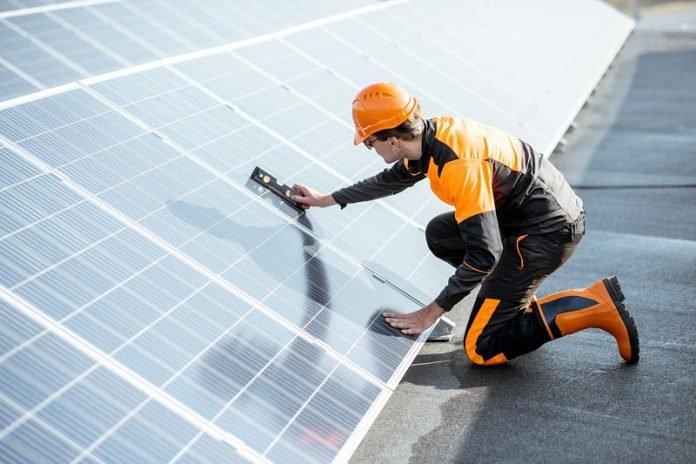
Organic solar cells (OSCs) are crucial in our efforts to move away from fossil fuels.
Over the years, advancements in technology have made these solar cells more efficient and affordable.
A recent breakthrough by Joo Hyun Kim and his team at Pukyong National University in South Korea introduces a new method that could significantly enhance the performance of OSCs.
One of the key ways to improve OSCs is by using specialized materials called “polyelectrolytes.”
These materials can help solar cells work better, but they have been hard to produce in the high purity needed for these applications.
The new research, published in the journal Organic Electronics, presents a simpler method to create high-purity polyelectrolytes and use them in OSCs.
Kim and his team developed an easier way to produce these polyelectrolytes. Normally, making them involves a complex and time-consuming process to remove excess materials.
However, the new method simplifies this step, making the production faster and more efficient.
Polyelectrolytes are made by combining positively and negatively charged ions in a solution.
They can improve OSC efficiency by acting as the “cathode interlayer,” which is a thin layer between the cathode (where electrons flow out) and the active layer (where sunlight is turned into electricity).
This special layer helps collect electrons more efficiently and allows them to move more smoothly from the active layer to the cathode.
In their study, Kim’s team used a new chemical process to create polyelectrolytes without the need for excess starting materials.
They incorporated an ionic group into the polymer side chain, making the polyelectrolytes soluble in alcohol. They then used an ion exchange technique to modify these polymers, making them suitable for use as cathode interlayers in OSCs.
This new process involves exchanging the negative charges in the polyelectrolyte with different charges in the surrounding alcohol solution. This exchange allows the researchers to control the properties of the polyelectrolytes, making them perform better in the solar cells.
The result of this innovation is impressive. The new polyelectrolytes improved the efficiency of converting sunlight to electricity by over 9% in their experiments. This significant boost shows great potential for these materials in enhancing the performance of organic solar cells.
Kim and his team hope that their new method can be widely adopted, helping to speed up the global use of renewable solar energy and reduce our dependence on fossil fuels. This breakthrough could pave the way for more efficient and accessible solar power, bringing us closer to a sustainable energy future.



